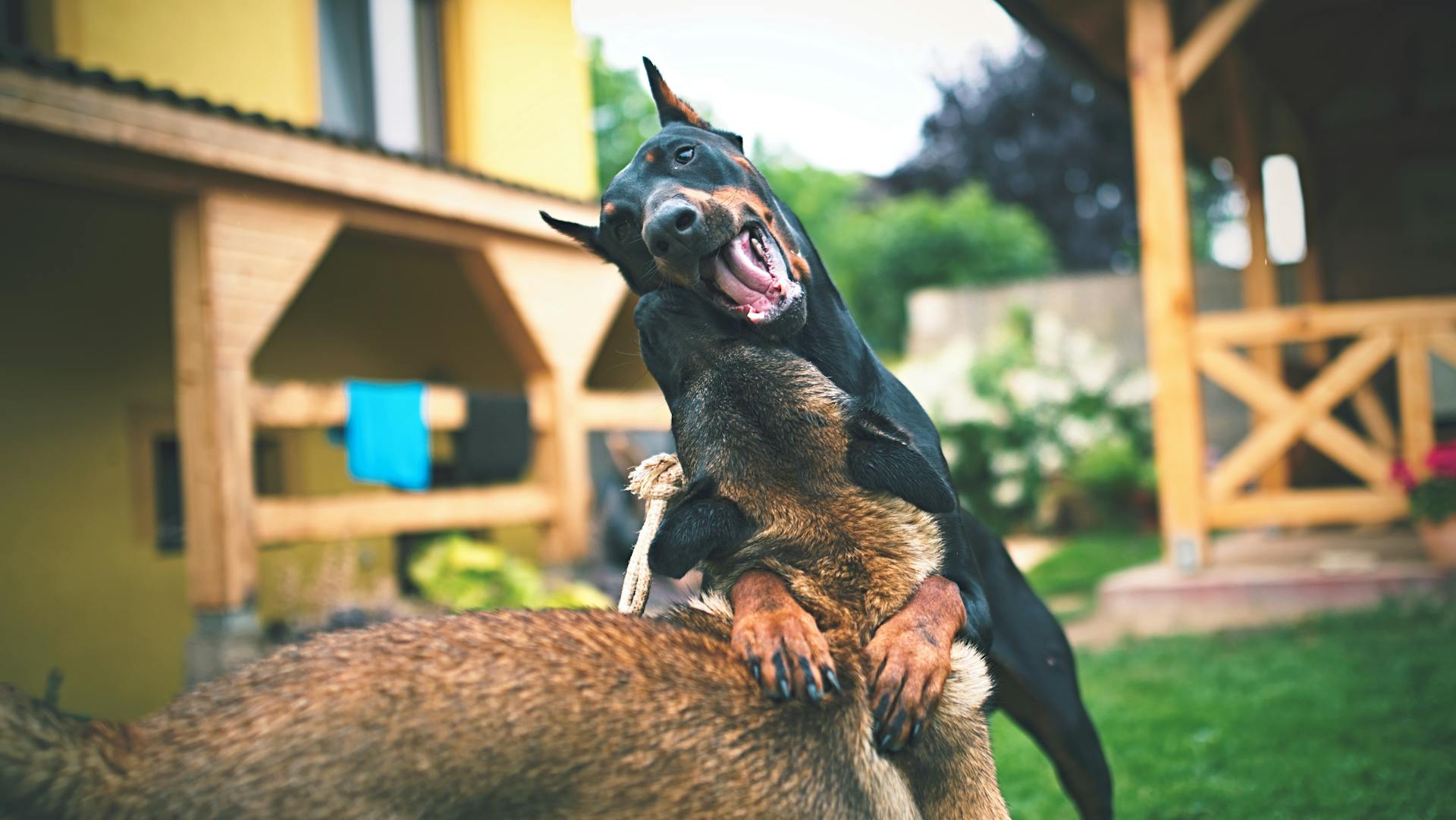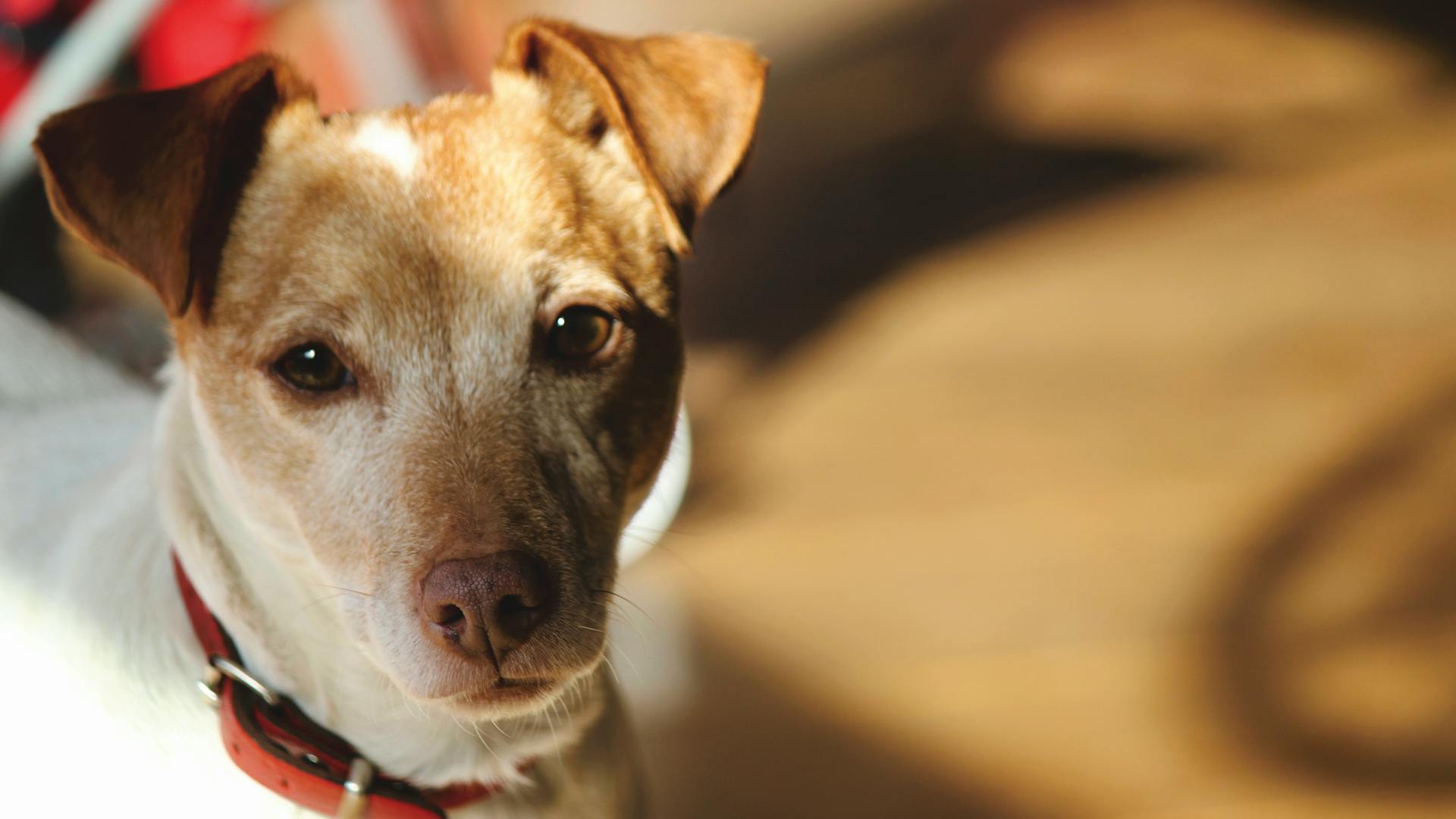
The Doberman Pinscher is a breed known for its sleek and athletic build, but its coat colors are just as impressive. With a range of colors to choose from, it's no wonder why many people are fascinated by the Doberman's diverse coat palette.
Doberman Pinschers can come in a variety of colors including red, blue, fawn, black, and rust.
Doberman Pinscher Coat Colors
Doberman Pinschers come in a variety of colors, but some are rarer than others.
Solid-colored Dobermans are relatively rare, especially if there's a dilution gene present, which means blue and fawn Dobermans are among the rarest ones.
White Dobermans are rare, but a few breeders intentionally produce them, making them slightly more common than fawn or blue ones.
Albinism is so rare in Dobermans that some experts doubt it exists, making albino Dobermans likely the rarest of all.
It's essential to remember that rare coat colors don't necessarily make a dog more desirable, and buying a dog for its unique color can lead to costly medical bills down the line.
Here are the main Doberman coat colors mentioned:
- Black and rust (also known as black and tan)
- Red
- Blue
- Fawn
- White
- Albino (extremely rare)
Types of Coat Colors
The Doberman Pinscher is a breed known for its striking coat colors. Black and rust is the most common color, making up 62% of the breed.
A survey conducted by Doberman's Den found that black and tan is the most popular color among Doberman owners, with red and rust coming in second. Blue Dobermans are slightly more popular than fawn, with 8% of the votes compared to fawn's 6%.
The rarest color for a Doberman is a topic of debate, with some arguing that the cream or white Doberman is the least common, while others claim it's the pure black Doberman without rust markings. However, some experts believe that the blue Doberman is the rarest, making up just 8-9% of the breed.
If you're considering getting a Doberman, it's essential to research the different coat colors and their associated characteristics. Black and tan, for example, is a common color combination that can result in a unique and striking appearance, as one owner discovered with their 5-month-old Doberman puppy.
Here's a breakdown of the most common Doberman coat colors:
Keep in mind that coat color can affect a Doberman's health and temperament, so it's crucial to choose a reputable breeder who prioritizes the welfare of their dogs.
Solid Colors
Solid colors in Doberman Pinschers are a rare occurrence, and it's essential to understand the reasons behind this.
The AKC does not recognize solid colors, and for good reason.
Melanistic Dobermans, such as solid black or solid red, can appear spontaneously in a litter, but this is extremely rare, happening only one in a thousand times.
These dogs often have faint rust markings, but their genetic background and potential health problems are unknown.
Responsible dog experts advise against purchasing solid colored Dobermans due to the risks involved.
Solid red Dobermans, in particular, are often considered a mixed breed due to the unique genotype combination that produces them.
The risks associated with solid colors include unknown genetics and potential health problems, making it essential to prioritize a Doberman's health and well-being.
If you're considering bringing a Doberman into your family, make sure to purchase from a reputable breeder who prioritizes the health and temperament of their dogs.
On a similar theme: Doberman Pinscher Diseases
Color Variations
The Doberman Pinscher comes in a variety of colors, but one thing remains constant - the prominent rust (or tan) colored markings. These markings are a defining characteristic of the breed.
In American Dobermans, the tan or rust colored markings should be sharply defined and appear in specific locations, including above each eye, on the muzzle, throat, chest, and all four legs and feet. A small white patch on the chest is also common, but it should not exceed a half-inch square in size.
The European Doberman has similar markings, but they are generally darker in color. These markings should be clearly defined and appear in various locations, including the muzzle, cheeks, and top of each eyebrow.
Here are the specific locations of the tan markings for both American and European Dobermans:
The breed is also known by various color names, including Black, Black and Tan, Black and Brown, and Light Brown.
Readers also liked: Black and White Doberman Pinscher
Rarity and Popularity

The rarity and popularity of Doberman colors can be a topic of debate. Some people believe the cream or white Doberman is the least common, while others think the pure black Doberman, without rust markings, is the rarest of them all.
The blue Doberman makes up just 8-9% of the breed, making it a relatively rare color variation.
Patterns and Markings
Dobermans have a distinctive set of markings that are an integral part of their breed standard. These markings can vary slightly between American and European Dobermans.
A small white patch on the chest is allowed for American Dobermans, but it shouldn't exceed a half-inch square in size. European Dobermans, on the other hand, do not have this option.
Both American and European Dobermans have rust or tan markings that are sharply defined and appear in specific locations. These locations include above each eye, on the muzzle, throat, chest, legs, and feet.
Here are the specific marking locations for American and European Dobermans:
These markings are a key part of what makes a Doberman a Doberman, and understanding them can help you appreciate the breed's unique characteristics.
Rare and Unique Colors
The Doberman Pinscher is known for its stunning coat colors, but some of them are truly one-of-a-kind. The Melanistic Fawn Doberman is the rarest color of all, with a genetic mutation that causes an over-production of melanin resulting in a unique fawn color.
Melanistic Fawn Dobermans are followed closely by Melanistic Blue Dobermans, which have a similar genetic mutation that dilutes the black color to a blue or gray appearance. These dogs are incredibly rare and can cost anywhere between $700 and $4000.
Some of the rarest Doberman colors include Melanistic Red, Melanistic Black, and White Dobermans. While they may be rare, they can also be prone to poor breeding practices, including inbreeding, due to their rarity.
Here's a list of the rarest Doberman colors in order of how rare they are:
- Melanistic Fawn
- Melanistic Blue
- Melanistic Red
- Melanistic Black
- White
Melanistic Colors
Melanistic Colors are a rare and unique phenomenon in the Doberman breed. These dogs have an excess production of melanin pigmentation, resulting in a solid black, blue, or red coat.
The Melanistic Black Doberman is one of the rarest colors, with a price range of $700 to $4000. They are not accepted as a breed standard due to the lack of typical rust-colored markings.
Melanistic Red Dobermans, also known as All-Red or Chocolate, are incredibly rare and can be difficult to verify as pure Dobermans. Their price range is also between $700 to $4000.
Melanistic Blue Dobermans, or All-Blue, have a genetic mutation that causes the over-production of melanin and the color-dilution gene. This results in a blue or gray appearance, and they can cost between $700 to $4000.
Here's a list of the rarest Doberman colors, in order of rarity:
- Melanistic Fawn
- Melanistic Blue
- Melanistic Red
- Melanistic Black
- White
These rare colors are often the result of poor breeding practices, including inbreeding, which can lead to health issues in the dogs.
Albino and Other Rare Variations
Albino Dobermans are extremely rare, making up a tiny fraction of the breed.
They owe their rarity to a genetic mutation that can remain hidden for generations.
In fact, it's hard to even call albino white a color, as these pups suffer from albinism, a condition that causes a lack of pigmentation not just in their coat but also in their skin and eyes.
These dogs have pale pink noses and very pale, almost pink eyes.
Unfortunately, albino Dobermans are prone to numerous health conditions, such as sight and hearing problems, and an increased chance of skin issues and bone diseases, including hip dysplasia.
They are also extremely sensitive to sunburns, and their skin might peel after just a few hours in the fairly mild spring sun.
The rarity of albino Dobermans means they are not intentionally bred.
In fact, some experts doubt they even exist.
If a dog is in a non-standard color, this usually means that its shade is due to some health concerns that have affected its appearance.
Here's a list of the rarest Doberman colors, in order of their rarity:
- Melanistic Fawn
- Melanistic Blue
- Melanistic Red
- Melanistic Black
- White
- Fawn and Rust
- Blue and Rust
Note that the rarity of these colors can vary depending on the breeder and the specific lineage of the dog.
Health and Genetics
Deafness can occur in dogs with a lack of pigment in their ears, making them more prone to sunburns on skin without pigment.
Some health problems are connected to coat color genes, particularly in Dobermans.
Blue Dobermans are at high risk for developing CDA, with an estimated 80% developing the condition at some point in their lifetime.
Black Hair Follicular Dysplasia can occur in black Dobermans, although it's not as common as CDA.
Careful breeding practices and removing sick dogs from the gene pool can help prevent most of these diseases.
Intriguing read: Black Doberman Pinscher
Comparison and Miscellaneous
Doberman Pinschers can be quite a sight to behold, and their coat colors play a big role in their unique appearance.
Red Doberman Pinschers have a distinctive rust-colored coat, which is caused by a genetic variation in the production of the melanin pigment.
Their coats can also be a beautiful fawn color, ranging from a light cream to a dark golden hue.
The Doberman Pinscher's coat color can also affect their eye color, with some having dark brown eyes and others having lighter-colored eyes that match their coat.
Some Doberman Pinschers are born with a black coat, but it's worth noting that this color is not as common as the others.
On a similar theme: Labrador Chocolate Colour
American vs European

American vs European Dobermans have some notable differences. The tan markings on European Dobermans are typically a bit darker than those on their American counterparts.
The kennel clubs in the two regions have slightly different breeding practices, which has led to these differences. European Dobermans, for example, are not allowed to have dilution genes, making their colors more vibrant.
Here are the recognized standard Doberman colors according to the FCI:
- Black and rust
- Red and rust
The FCI is a bit more strict when it comes to registering dogs, which is why you won't see as many variations in European Dobermans.
Most Expensive Color
The most expensive color of Doberman is a rare one. A white Doberman can be sold for up to $5000.
Show-quality dogs tend to cost more than working dogs, and the same goes for rare colors. A standard, black and rust Doberman typically costs between $400 and $2500.
Younger puppies will usually be costlier than adult dogs, and the same applies to rare colors.
Frequently Asked Questions
What is the recessive color of Dobermans?
The recessive color of Dobermans is Red. This color can be carried by a parent even if they appear to be Black.
Featured Images: pexels.com


